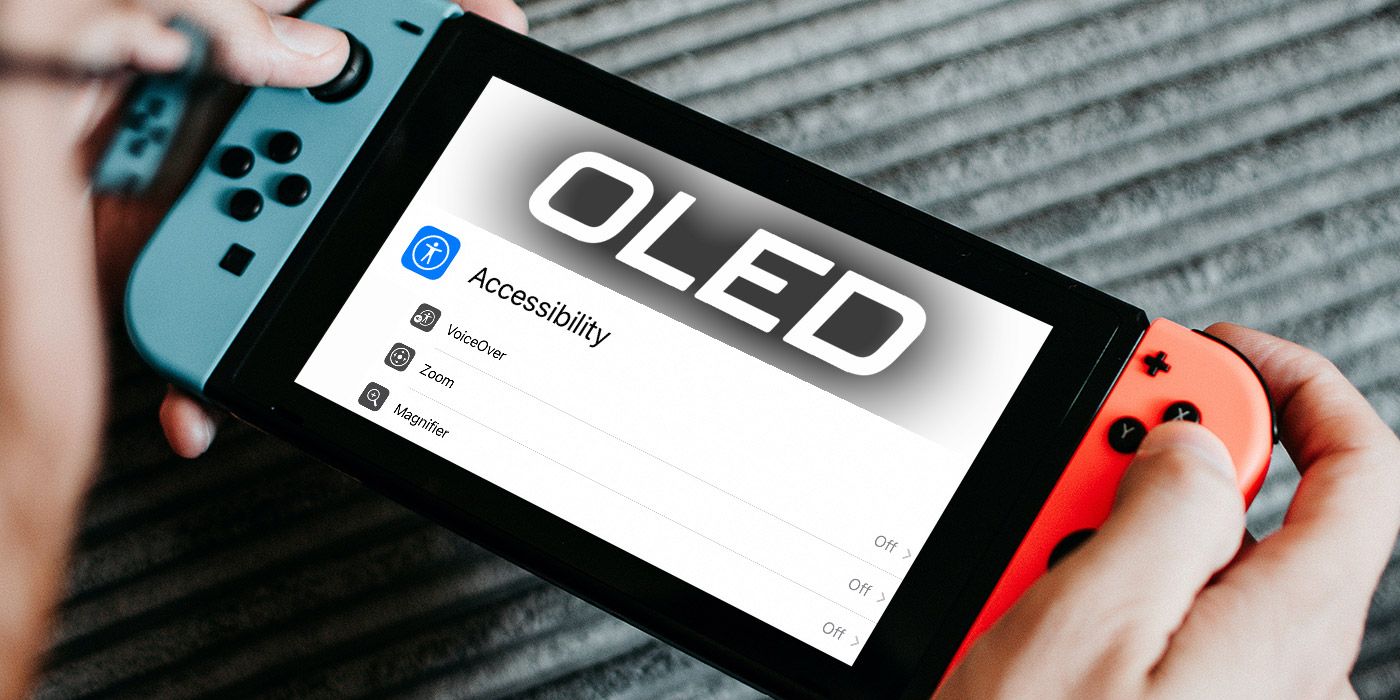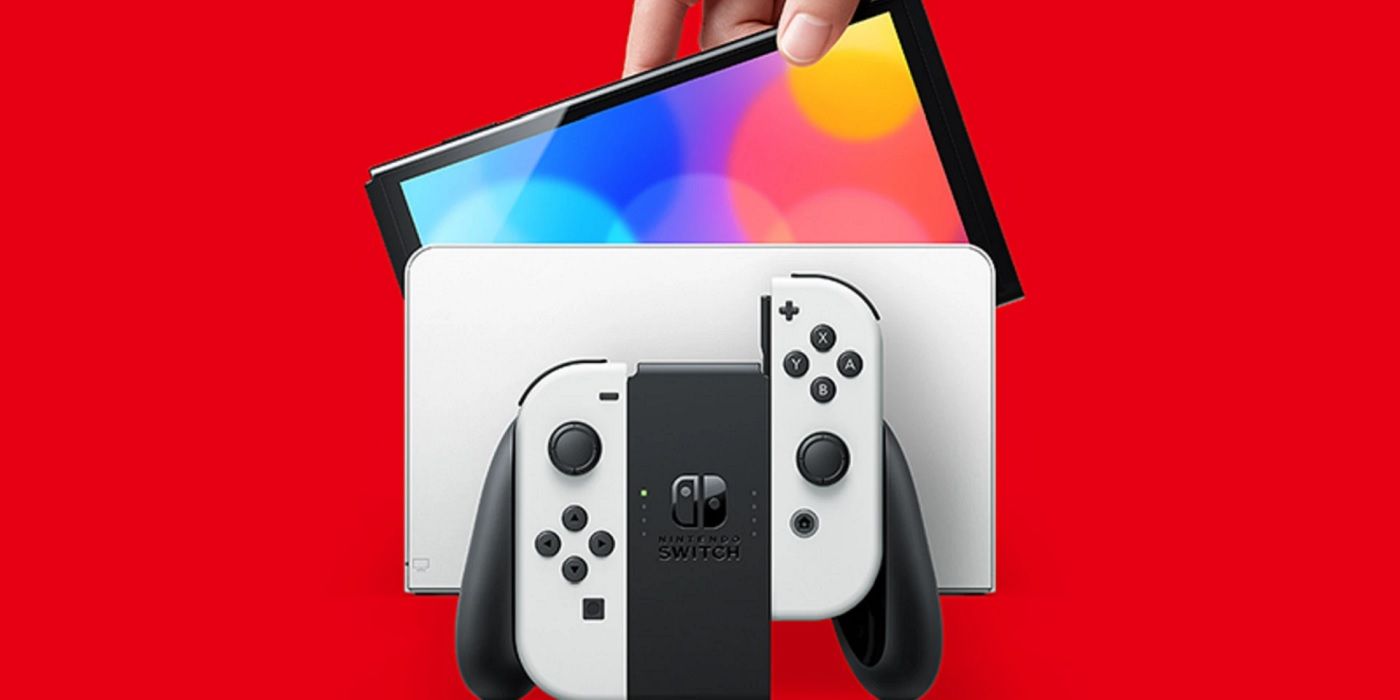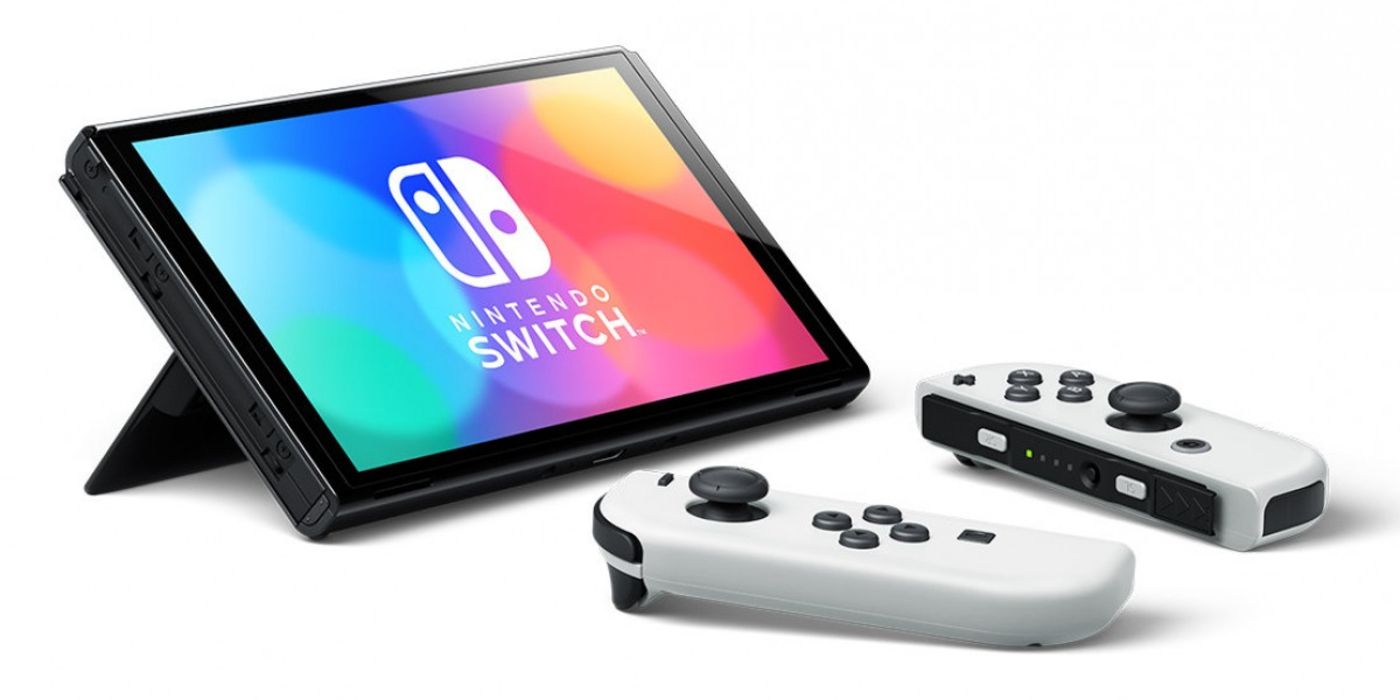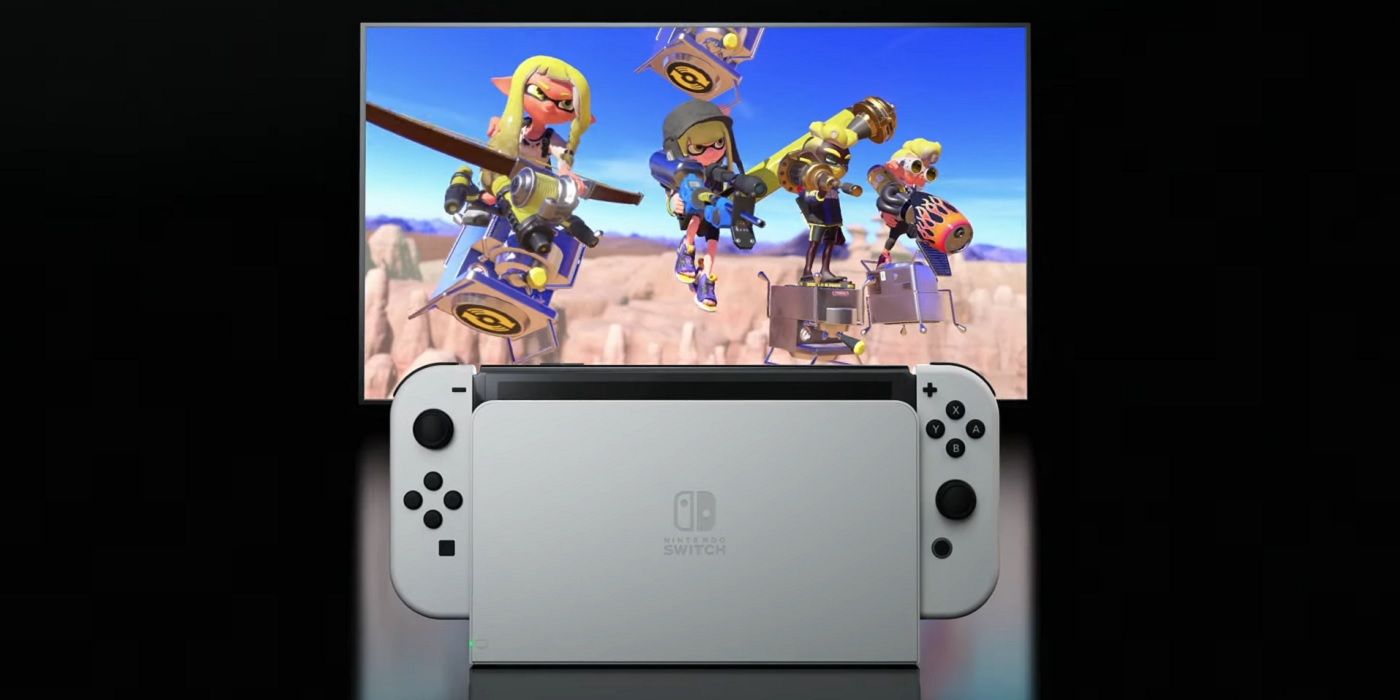After months of rumors suggesting Nintendo was working on an upgraded version of its popular hybrid console called the "Nintendo Switch Pro," this week the company announced the Nintendo Switch OLED model via a surprise Twitter post. The Switch OLED doesn't include everything rumored to be in the Pro, such as 4K resolution support while docked and improved graphical performance with Nvidia's Deep Learning Super Sampling (DLSS) AI tech. Fan outcry about the lack of better performance specs over four years into the Switch's life is justified even if reactions were perhaps unfairly stoked by rumors, but even so the OLED model offers numerous benefits.
The basic Nintendo Switch specs carry over to the OLED model, even allowing players to reuse their old Joy-Cons, but there are both external and internal improvements. The new console model has a seven-inch OLED screen as opposed to the original's 6.2-inch LCD, as well as better speakers and a unit-wide stand with adjustable angles. Internally, the OLED model has 64 GB of storage compared to the original's 32, and the dock comes with a LAN/Ethernet port so users can plug directly into their network. While general consumers may not find the changes to be wholly groundbreaking, they incrementally make the Switch a better, more accessible device.
Visual and Audio Improvements
Many have lauded the Nintendo Switch for its portability - in fact, that's arguably the console's biggest selling point. While it isn't as powerful as Sony or Microsoft's consoles, the Switch is able to take hundreds of fan-favorite games on-the-go. Between major titles in first-party Nintendo franchises like The Legend of Zelda and Super Mario to intensive ports like The Witcher 3: Wild Hunt, it's hard to argue with the appeal of portability.
However, its relatively small screen and adequate speaker output in handheld mode may make it difficult for those with visual or audio impairments to take full advantage of this feature. When the Nintendo Switch is docked it can display on a TV or computer monitor, which gives users easier access to larger, more vibrant screens and better audio sources, but this locks the console to one's gaming rig like any other.
The Nintendo Switch OLED model isn't large enough to match a television, but its display screen is about an inch larger than the iPhone 12 and iPhone 12 Pro (with about as much storage as the base model's smallest capacity, according to Apple's website). That size increase with brighter colors thanks to the OLED screen should be beneficial to those with visual impairments who want to take their consoles on long car trips, for example, and a boost in audio could do similar wonders for the hard of hearing.
No one person's experience is a monolith; how much of an improvement the Switch OLED offers will differ. However, docking the device is still an option if the new Switch isn't perfect, even though this negates out some of the benefits to its $50 price increase.
More Comfortable Viewing Angles
One way the Nintendo Switch OLED model suffers in terms of accessibility is its continuing reliance on the Joy-Cons. As innovative as the idea of a controller pair that can be used together or split for two parties may be, their relatively small chassis and buttons may be difficult to use for those with chronic pain or disorders impacting motor skills. That's not to mention the ongoing concern with Joy-Con drift, which doesn't appear to be fixed for the new model.
That being said, the Switch can be configured to work with different controllers. In fact, one individual has even modded the Xbox Adaptive Controller to be used with a Switch - there's no reason to believe that will be impossible with the Switch OLED model. Having a better-designed kickstand should make it easier for anyone to play in tabletop mode, that way they get better visuals and audio without having to constantly cling to the Switch's small controllers in handheld mode.
While the original Switch has a kickstand that hides access to its microSD slot for expanded storage, this small plastic ramp is relatively flimsy, stuck at one angle, and may leave the device imbalanced because of its placement far to the right-hand side of the console. The Nintendo Switch OLED model has a more stable kickstand across the entire back of the console's main body, and its initial reveal video shows users able to leave it on multiple angles. Using a more acute or obtuse angle may make it so users can find a comfortable place to rest the Switch without craning their necks.
Less Online Lag and Stuttering
Despite its lack of improved performance features at a core technical level, the Nintendo Switch OLED model may make the Switch family more accessible to those who want to play online. Many Switch games are not known for having stellar online services, even large first-party titles such as Super Mario Maker 2 and Super Smash Bros. Ultimate. While part of this comes from the inherent design of their online systems, having a stable Internet connection is also not a guarantee in the United States and other parts of the world.
Being able to plug the new Switch model directly into one's router using its dock's new LAN port isn't guaranteed to solve online issues - again, having stable Internet isn't a guarantee even when directly connected via an Ethernet cable. But the ubiquity of the Switch OLED's dock having such a feature means more people are likely to have better connections, and thus experience less stuttering, lag, or other visual impairments. This can also reduce the likelihood of dropped inputs, which could be especially frustrating to those with pre-existing barriers to play. The dock is sold separately and works with the original Switch model too, compounding this benefit for all those who can take advantage of it.
It's hard to say the Nintendo Switch OLED model is a perfect upgrade, and many have already railed against its lack of grandiose improvements. However, the fact it costs $349.99; just $50 more than the base model and still under the physical PS5 and Xbox Series X at $499.99; means it doesn't have to be a huge leap. The features it does offer potentially make each player's experiences better, and more importantly they increase the threshold for how many people can play at all.
The Nintendo Switch OLED model releases October 8, 2021.




